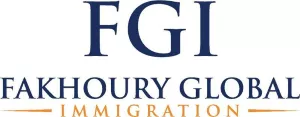Major sports leagues in the United States have been exporting performances or matches abroad in recent years in an attempt to increase their respective fan base. A byproduct of this is an increase in recruiting foreign-born athletes. For example, the National Basketball Association (NBA) announced in 2023 that they have a record breaking 125 international players while nearly 30% of current players in the National Hockey League (NHL) come from outside of North America. With the major league sports' continued investment in and exposure to foreign markets, we can anticipate an increase in talented international athletes seeking immigration opportunities in the United States. Studies have shown that immigrants make important contributions to sports in America. A study published in 2020 from the National Foundation for American Policy has shown that foreign-born players make up 23% of the NBA rosters, 29% of MLB rosters, and 72% in the NHL.1 The report goes on to affirm that "the immigration of foreign-born players into the NBA, MLB, and NHL has proven to be a success." For example, "NBA revenues increased from $118 million in the 1982-83 season to nearly $9 billion in the 2018-19 season" while NHL revenue increased by 49% between 2010 and 2019."
P-1 VISAS AND INTERNATIONALLY RECOGNIZED PLAYERS AND COMPETITIONS
The P-1 visa classification applies to foreign athletes who seek to come the United States solely for the purpose of performing at a specific athletic competition as an individual or as part of a team. The USCIS has established guidance for both professional and amateur athletes – this article will focus on professional athletes and those whose teams in the US are members of a foreign league/association.
P-1 visas have certain advantages; first, an individual athlete can legally work in the U.S. for the duration of their events and performances. Second, they can be granted for an initial period of five years with extension that total up to ten years residency in the U.S. Lastly, spouses and children under 21 can stay with the athlete on P-4 (dependent) visas. The visa program also allows for essential support personnel such as coaches, scouts, trainers, referees, umpires, interpreters, and the like, to accompany the athlete or team on P-1S visas.
The regulations require that the applicant be an "internationally recognized athlete" and that the applicant, and her team must be coming to the US to "participate in an athletic competition which has a distinguished reputation, and which requires participation of an athlete or athletic team that has an international reputation."2 The USCIS defines an internationally recognized athlete as having "a high level of achievement in a sport, demonstrated by a degree of skill and recognition substantially above that ordinarily encountered." The USCIS has interpreted this mean that it is "sufficient for the petitioner to show that the competition is at an internationally recognized level of performance such that it requires that caliber of athlete...."
The USCIS has stated that professional athletes must be coming to the U.S. to be employed as an athlete by:
- A team that is a member of an association of six or more professional sports teams whose total combined revenues exceed $10 million per year. The association must govern the conduct of its members and regulate the contests and exhibitions in which its member teams regularly engage; or
- Any minor league team that is affiliated with such an association.3
The USCIS has also provided clarifying guidance as to what constitute an internationally recognized competition:
- The level of viewership, attendance, revenue, and major media coverage of the events;
- The extent of past participation by internationally recognized athletes or teams;
- The international ranking of athletes competing; or
- Documented merits requirements for participants.4
A key feature of the P-1 visa that professional athletes will want to consider is that the P-1 visa is tied to their employers. If the player is traded from one organization to another, the new organization must file a new Form I-129 within 30 days of the date of acquisition. If the new organization fails to file a P-1 within that period, the athlete's employment authorization will cease. [i]
AMATEUR ATHLETES COMING TO US AS PART OF TEAM/FRANCHISE LOCATED IN US AND A MEMBER OF A FOREIGN LEAGUE/ASSOCIATION
Athletes who are part of an athletic group that is a member of a foreign league/association and that are located in the U.S. are eligible for a visa not to exceed one year (and this includes any extensions).5
An athlete must be employed as a team member of an association of six or more professional sports teams whose total combined revenues exceed $10 million USD per year. The association must govern the conduct of its members and regulate the contests and exhibitions in which its member teams regularly engage, or a minor league team affiliated with such an association. Additionally, amateur athletes or coaches coming to the United States must be part of a team or franchise that is located in the United States and a member of a foreign league or association. The league or association must meet the following requirements:
- The league or association must consist of 15 or more amateur sports teams;
- Participation in the league must make players temporarily or
permanently ineligible under National Collegiate Athletic
Association rules to:
- Earn a scholarship in the sport at a U.S. college or university; or
- Participate in the sport at a U.S. college or university;
- The league or association must be the highest level of amateur performance of that sport in the relevant foreign country; and
- A significant number of the individuals who play in the league or association are drafted by a major sports league or a minor league affiliate.
When filing a P-1 Petition, a professional athlete must provide the following supporting documentation with Form I-129.
- To establish that [the athlete] will be working for a team located in the United States that is a member of an association of six or more professional sports teams. This may include but is not limited to6:
- A list of approved participating teams prepared by the association or league;
- Contracts, agreements, or other documentation showing that the team is a member of the association or league;
- Letter from the association or league detailing and confirming the team's membership;
- Articles, reviews or other documentation from established sports media outlets or sports media personnel showing the team is a member of a qualified league or association; or
- Marketing and promotional material of the association or league that identifies its member teams.
- To establish that the total combined revenues of the association's teams exceed $10 million per year. This may include but is not limited to:
- Tax documents;
- Audited financial documents; or
- Articles or reports in established media outlets that specifically reference revenues generated by teams in the association or league.
- To establish that the association governs the conduct of its members and regulates the contests and exhibitions in which its member teams regularly engage. This may include but is not limited to:
- Association or league rules and bylaws;
- Articles or reports in established media outlets that specifically discuss action taken by the association or league to regulate the contests and exhibitions; or
- Statements from association or league officials who have the knowledge and authority to confirm the manner and extent to which the association or league regulates the contests and exhibitions.
The P-1 visa thus provides a viable pathway for foreign athletes to participate in events and performances in the United States. As U.S. major league sports endeavors to internationalize their reach, the P-1 visa will allow them to bring in foreign athletes that will build their fan base and drive revenue growth.
Footnotes
1. "The Contributions of Immigrants to Sports in America." National Foundation for America Policy, Policy Brief, July 2020. See: https://nfap.com/wp-content/uploads/2020/07/The-Contributions-of-Immigrants-to-Sports-in-America.NFAP-Policy-Brief.July-2020.pdf
2. 8 CFR 214.2(p)(4)(ii)(A). See eCFR: 8 CFR 214.2 -- Special requirements for admission, extension, and maintenance of status.
3. U.S. Citizenship and Immigration Services [hereinafter USCIS]: P-1 Athlete | USCIS [accessed March 6, 2024]
4. USCIS. Policy Manual. Chapter 2 - Eligibility Requirements | USCIS. USCIS issued guidance on this issue in March 2021: 20210326-Athletes.pdf (uscis.gov) [accessed March 6, 2024]
5. USCIS: P-1 Athlete | USCIS
6. USCIS: P-1 Athlete | USCIS
[i] USCIS. P-1 Athlete | USCIS
The content of this article is intended to provide a general guide to the subject matter. Specialist advice should be sought about your specific circumstances.

